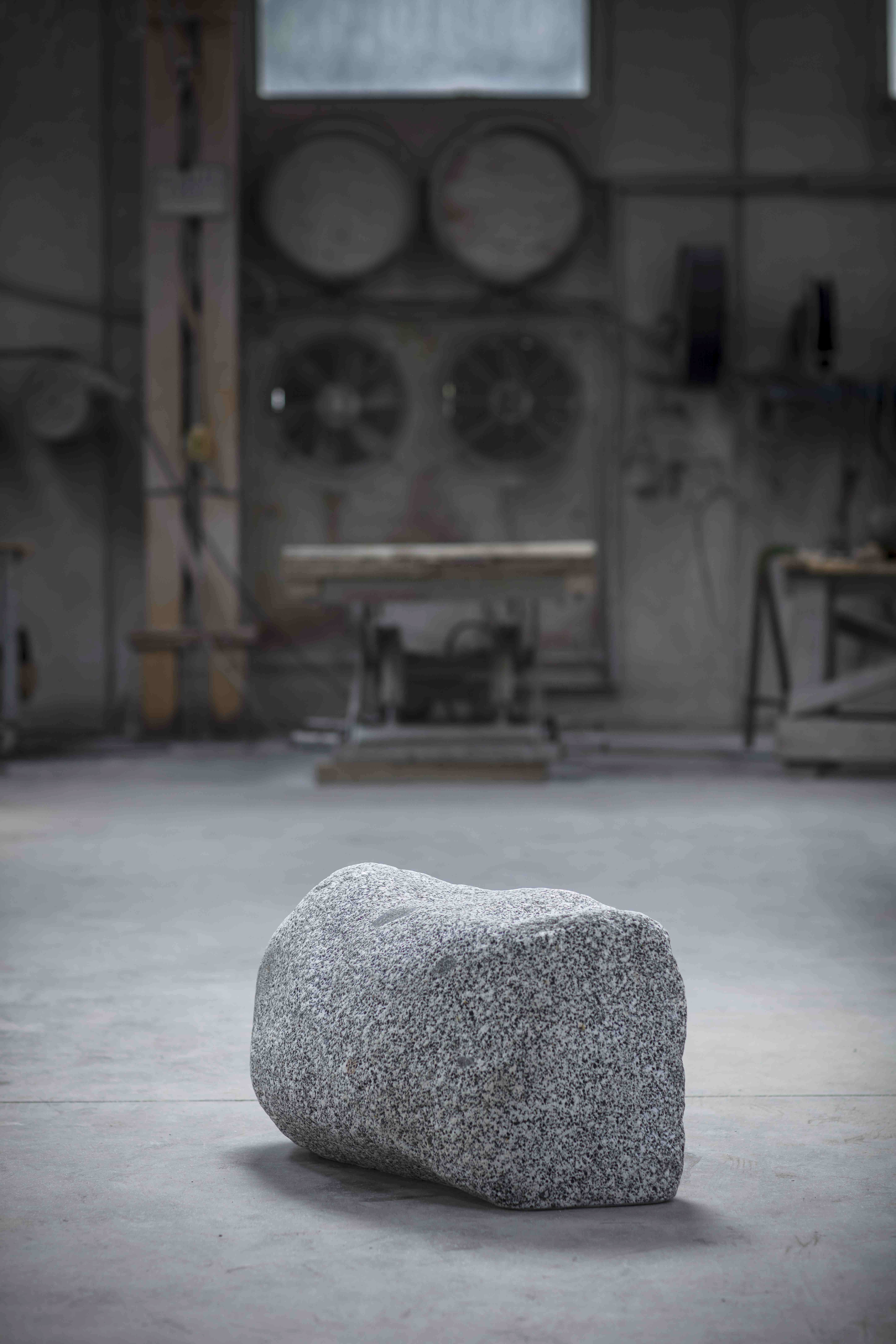Solid Propositions
Among the progenitors of contemporary design, Scott Burton was a singular figure. He was not a designer expanding the discipline, opening it up to the expressive range of fine art, but the reverse, a highly adept artist who concluded that furniture was where he needed to be. He made objects that can be understood (borrowing a phrase from his essay “My Brancusi”) as a “usable meditation on utilitarian form.” Most famously, in the early 1980s, he created a series of Rock Chairs simply by removing angles from natural stone, leaving a negative space for sitting.
Recently, as if to prove the old adage that context is everything, Max Lamb has made his own, superficially similar Tonalite Boulder Chairs. But if Burton, four decades ago, was making “sculptures of chairs” — conceptual objects that posed essentially ontological questions — Lamb is doing something quite different. In the context of his prolific and wide-ranging practice, which includes a deep collaboration with the Italian stone shop Pedretti Graniti, his “rock chairs” should be seen as just one alongside many of the ways he has managed to wrest expressive form from recalcitrant matter. Lamb particularly chose boulders from a riverbed near the Pedretti shop, struck by the way their contours indexed natural forces: “‘the power of the river is also immediately visible in the way it has carved the landscape over millions of years, and perhaps only slightly quicker, shaped the riverbed and eroded the loose granite rocks as they tumble downstream.”
Recently, as if to prove the old adage that context is everything, Max Lamb has made his own, superficially similar Tonalite Boulder Chairs. But if Burton, four decades ago, was making “sculptures of chairs” — conceptual objects that posed essentially ontological questions — Lamb is doing something quite different. In the context of his prolific and wide-ranging practice, which includes a deep collaboration with the Italian stone shop Pedretti Graniti, his “rock chairs” should be seen as just one alongside many of the ways he has managed to wrest expressive form from recalcitrant matter. Lamb particularly chose boulders from a riverbed near the Pedretti shop, struck by the way their contours indexed natural forces: “‘the power of the river is also immediately visible in the way it has carved the landscape over millions of years, and perhaps only slightly quicker, shaped the riverbed and eroded the loose granite rocks as they tumble downstream.”
The attention paid to material specificity, here, is crucial. It is a quality widely shared among contemporary designers. Witness Najla El Zein’s work here, a small prototype for another “rock chair” of sorts, though less evidently serviceable than either Burton or Lamb’s. Like Lamb, though, she chose a very remarkable stone to work with in this study, a dark Iranian travertine, which expresses a developmental stage within the overall narrative of the Seduction series.
Guillaume Bardet’s Tabouret, lastly, is not of stone but bronze — but it is just as firmly grounded, just as fundamental in feeling, as either of the other works here. It is an anchor in space. Burton was nearly unique, for his time, in seeing that a piece of furniture could be a philosophical proposition. This insight has now become widely accepted, helping to open up possibilities like these: the wide-open territory of the present.
DNA is a collaborative essay project, intertwining three gallery programs into a single, generative presentation.





